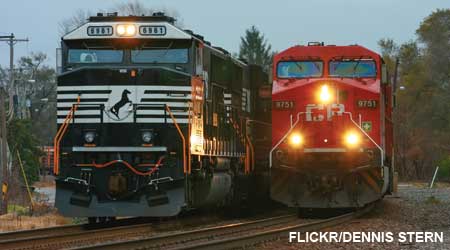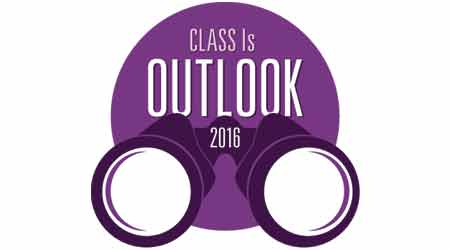Stay updated on news, articles and information for the rail industry
November 2007
Rail News: Rail Industry
Capacity to CREATE: The $1.5 billion CREATE program is a work in progress
— by Desiree J. Hanford
Like a train starting to pull out of a station, the Chicago Region Environmental and Transportation Efficiency (CREATE) Program is slowly gaining momentum as the various public and private partners — including the city of Chicago, state of Illinois and six North American Class Is — continue to work together to complete first-phase projects for the $1.5 billion undertaking.
Not that the CREATE train will be chugging along all that quickly any time soon. That it's moving forward at all is, perhaps, a feat unto itself. One project has been completed to date: the Grand Avenue underpass in Franklin Park, Ill. The remaining first-phase projects are in various stages, with environmental work either complete or in progress at several locations and engineering work under way at a number of sites.
There have been a few bumps during CREATE's first phase — notably, the absence of a $100 million commitment from the state of Illinois, a funding gap that underscores public-private partnerships' "snag" potential. By their very nature, these deals are complex: You're mingling funding from private companies, which are accustomed to making decisions that maximize their return, with funds from the public sector, and public officials ultimately must make decisions based on what their constituents want maximized, so to speak.
Finding the right funding balance, then, is key to keeping the partners focused on the project's short- and (often) long-term goals. Equally important is coming up with ways to keep the partners pulling in the same direction — and to trust that what's good for the industry as a whole is also good for the constituencies individually.
"You need patience, persistence and trust, and we all struggle with the latter from time to time with regard to each other, and with the cities and state," says Paul Nowicki, BNSF Railway Co.'s assistant vice president of government and public policy, and a member of CREATE's advocacy committee. "It's easy to lose your focus and patience but you just can't. Chicago is too important to the industry."
And the rail industry is vitally important to the city of Chicago and state of Illinois — and, in turn, the rest of North America, CREATE's public partners add.
"We want and need the railroads to succeed, and for them to operate efficiently and grow with demand in coming decades," says Marcia Jimenez, the city of Chicago's CREATE project director. "This is the railroad center for the country."
A Quest For Congestion Relief
There had been talk of improving the Chicago-as-railroad-center's freight and passenger rail system for decades, but it took a January 1999 storm that dumped more than 20 inches of snow and snarled rail traffic for weeks for the talk to turn to action — or, at least, an action plan.
With the Conrail integration looming, a group of chief operating officers from the major rail carriers serving Chicago met in March 1999 to address congestion issues magnified by the snowstorm. The officers formed the Chicago Planning Group (CPG) under the authority of the Association of American Railroads to prepare for future disasters, as well as the Conrail split.
Following a CPG committee recommendation, the group formed the Chicago Transportation Coordination Office (CTCO) in January 2000. CTCO's mission? Establish operational efficiencies to improve traffic flow through railroad cooperation.
An average of 1,200 trains pass through the area daily — 500 freight and 700 passenger — and Chicago is the only city where six of the seven Class Is converge: BNSF, CSX Transportation, Canadian National Railway Co., Canadian Pacific Railway, Norfolk Southern Railway and Union Pacific Railroad.
Nearly 66 percent of all international container traffic moves through Chicago, most of which comes from West Coast ports. The old saw about freight taking two days to get from the coast to Chicago and another two days to get through Chicago may or may not be accurate, but there's no question that Windy City bottlenecks have a domino effect in other areas of the country.
"We've got infrastructure that was built for a different era — when trains were shorter, there was more passenger service and the intermodal service wasn't to the degree that we see today," Nowicki says. "That served everyone well for 100 years, but it's time to update it. Chicago is also unique with the mingling of freight and passenger trains, mainly Metra during the day and freight at night."
Create A 'National' Project
Enter CREATE. Two years in the making, the six-year plan was unveiled in June 2003 with considerable fanfare. It calls for developing four freight rail corridors and one passenger rail corridor in the Chicago area to reduce train delays, relieve rail and highway congestion, shorten travel times for commuters, and improve air quality and public safety.
The partners plan to create 25 new roadway underpasses or overpasses at locations where vehicle and pedestrian traffic cross railroad tracks at grade level; build six new rail overpasses or underpasses to separate passenger and freight tracks; upgrade track, switches and signal systems; and more.
"One-third of all freight traffic in the U.S. comes through Chicago," says Earl Wacker, CSX Transportation's director of Chicago coordination and the CTCO's director. "[CREATE] isn't a regional project but a national one."
In April 2004, the Illinois Department of Transportation (IDOT) announced that five engineering consultants had been awarded contracts to begin preliminary engineering work: Parsons Transportation Group Inc.; Edwards and Kelcey Design Services; TranSystems Corp.; Hanson Professional Services Inc.; and Alfred Benesch & Co. AAR enlisted HNTB to complete the aerial mapping work.
One Step Forward ...
The program's partners had hoped the federal government would appropriate about $900 million in the 2005 SAFETEA-LU highway bill, but the legislation included just $100 million.
As a result of the shortfall, no CN-related projects were part of CREATE's first phase, so the Class I isn't contributing financially during the current phase. In September 2006, CREATE's public-private stakeholders announced a three-year, $330 million funding agreement. Thirty-two of CREATE's 78 projects are scheduled to be funded under the agreement, the city of Chicago's Jimenez says.
Under the pact, the federal government and state of Illinois each would provide $100 million; BNSF, CPR, CSXT, NS, UP and the Northeast Illinois Regional Commuter Railroad Corp. (Metra), a combined $100 million; and the city of Chicago, $30 million.
In February 2007, the partners announced the federal government had released the first $25 million of its initial $100 million commitment to CREATE.
As part of the program's first phase, which is scheduled to be complete in 2009, eight highway-rail grade separation projects were in the design or construction phase, CREATE officials said in February, with another seven projects scheduled to begin in 2008.
Environmental work now is either complete or in progress at several locations, and engineering work is under way at numerous sites.
"We could be doing things faster, but we've had to pick and choose as to what could get done quickly and get the most bang for our buck," says CSXT's Wacker.
The Art Of Selection
The project selection process becomes that much more important when counted-on public funds are caught up in legislative channels. A $100 million appropriation from the state of Illinois hasn't been released because the state's general assembly has yet to pass a capital bill that contains the funding.
The lack of money from Springfield isn't a problem yet, but it will be if the Illinois legislature doesn't do something soon, says Tom Livingston, CSXT vice president for government affairs in Illinois and CREATE advocacy committee co-chair. Hearings will be held in Washington, D.C., in early 2008 on the next federal transportation bill starting in 2009, and Illinois will need to demonstrate a commitment to CREATE by the time those hearings begin, he says.
U.S. Rep. Dan Lipinski (D.-Ill.), one of several legislators to push for federal funding for CREATE, is optimistic that the Illinois General Assembly will pass that capital bill by year's end. U.S. Rep. Pete DeFazio (D-Ore.) granted Lipinski's request that the House Highways and Transit Subcommittee hold a field hearing in Chicago on the next highway funding bill. At press time, DeFazio, who chairs the committee, had planned to conduct a hearing on Oct. 29.
There also have been a few procedural hurdles to clear. For example, neither the state of Illinois nor the federal government had a means to measure the impact of noise and vibration from freight trains, says Merrill Travis, a consultant for the Chicago Department of Transportation and a member of the CREATE engineering committee.
Also, the use of federal funds meant procedures had to be put in place to track the steel used on various projects. Any steel used has to be purchased domestically unless that steel isn't manufactured in the United States or the U.S. version of the steel costs 25 percent more than what could be purchased outside the country, Travis says, adding that purchasers need a waiver to buy the steel abroad.
"[CREATE] is not as far along as we hoped we'd be in getting projects completed in the environmental or engineering phases, but we have done an incredible amount of work," the city of Chicago's Jimenez says.
A Symbolic Project
Project No. 1 has been logged in the "completion" column. On Sept. 1, the city of Franklin Park held a ribbon-cutting ceremony for a $44 million grade separation that was three years in the making and involved removing seven at-grade railroad crossings.
The funding for the Grand Avenue underpass came from a number of sources, including railroads, IDOT, the Illinois Commerce Commission, the federal Congestion Mitigation and Air Quality Improvement program, and Franklin Park, Mayor Daniel Pritchett says.
The underpass has relieved vehicle congestion and spurred economic development in the area, including a 240-unit condominium complex in a once-shuttered office building, Pritchett says.
"The revitalization of that area has been a side benefit," he adds. "Communities need to realize that it's more than just an overpass or an underpass. It could spur community development."
Meanwhile, an automated signal interlocking project in Brighton Park, which was funded with federal, state and local funds, also was completed this summer. Although not part of CREATE, supporters of the program point to the project as a reason the program is so crucial. The crossing was a mandatory four-way stop for all trains because it wasn't interlocked, slowing the progress of trains. Now, freight and passenger trains traverse the crossing without stopping unless necessary.
"Brighton Park is one of the biggest choke points in the system," Rep. Lipinski says. "The work that has been completed is important symbolically and for the help that it gives the overall rail system."
Bottom line: The Grand Avenue underpass and Brighton Park interlocking serve as examples of how funding will need to be pursued for other CREATE projects, Jimenez says.
"It's fair to say that we have to aggressively look for funding from other sources," adds Larry Wilson, IDOT's CREATE program manager. "We have to be scrappy fundraisers like [Franklin Park]."
CN, The 'J' & Some Q's
Meanwhile, railroads continue to plan strategic Chicago-area projects — and deals — of their own that may or may not affect future CREATE phases.
In September, CN revealed that it would purchase a major portion of the Elgin Joliet & Eastern Railway Co., a 198-mile railway that circles Chicago, from U.S. Steel Corp. for $300 million. The move raised questions about what that means for development along CREATE's central corridor. It's possible the list of projects for the central corridor will be adjusted, but any decision will be made by all CREATE partners, BNSF's Nowicki says, adding that any decision would be made by all CREATE partners.
In a press release, CN said the EJ&E purchase would "significantly improve the fluidity" of the railway's Chicago-area operations. Gordon Trafton, CN's senior vice president for the southern region, adds that the Class I will continue participating in CREATE despite the pending acquisition.
"We believe [CREATE] is a solution for the industry, so nothing changes in terms of our role," he says. "I would have hoped the funding would have been more and that the projects would have been well under way by now."
Despite the project's challenges, CREATE partners know a less-congested Chicago is vital to the rail industry's (not to mention North America's) future. They also know that they'll need to continue checking their own idiosyncrasies and interests at the door in order to keep the program on track.
Pre-CREATE, a railroad may have simply turned down a request to work on an overpass or underpass because the railroad believed the public would be the primary beneficiary of the project, UP spokesman Mark Davis says. But railroads now better understand that they need to work together, there has to be a sharing of the costs involved — and projects can benefit both sides. The public benefits from a new overpass or underpass by the elimination of vehicle delays, and the railroads may benefit from improved velocity, he says. As a result, UP is considering more public-private partnerships in other states, Davis says.
But CREATE, program stakeholders know, remains a work in progress on a variety of fronts — from funding to project development to public-private partnering. And the key is to keep on doing the work. On all fronts.
"Chicago is an absolutely critical hub, and no single railroad can solve the congestion issue and other challenges alone," says Hugh Kiley, assistant vice president of operations for Norfolk Southern Corp. "The traffic forecasts by the Department of Transportation and others are staggering. Shame on everyone if we miss this opportunity."
Desiree J. Hanford — who worked for Dow Jones & Co. the past 10 years covering the equities market, including transportation — is a Chicago-based free-lance writer.
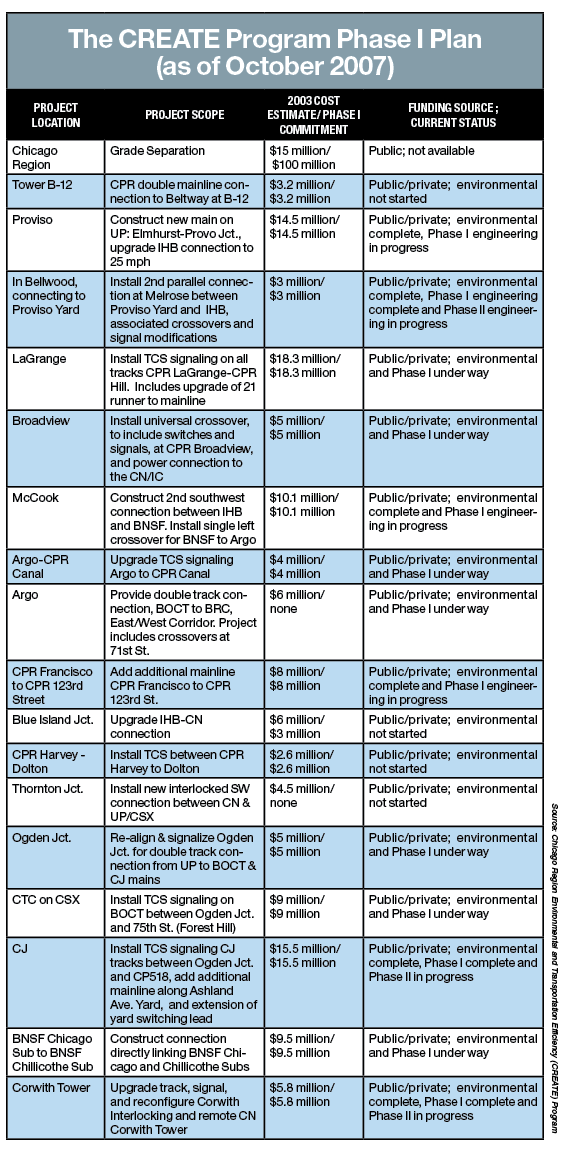
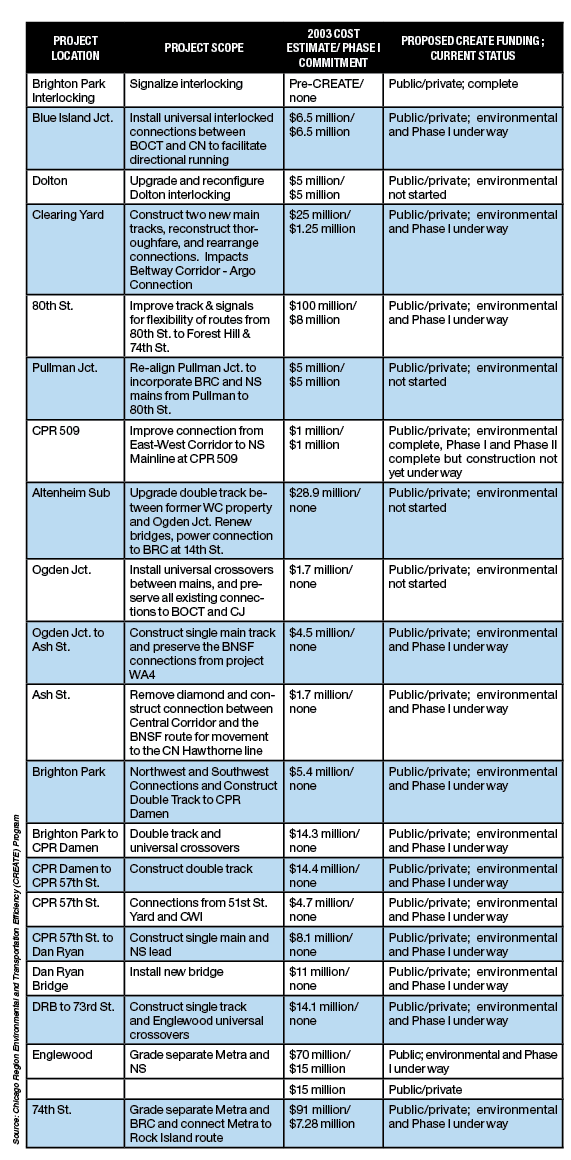
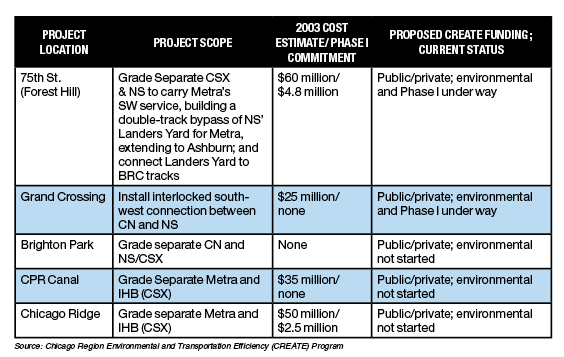


 2025 MOW Spending Report: Passenger-rail programs
2025 MOW Spending Report: Passenger-rail programs
 Gardner steps down as Amtrak CEO
Gardner steps down as Amtrak CEO
 Guest comment: Oliver Wyman’s David Hunt
Guest comment: Oliver Wyman’s David Hunt
 Women of Influence in Rail eBook
Women of Influence in Rail eBook
 railPrime
railPrime






